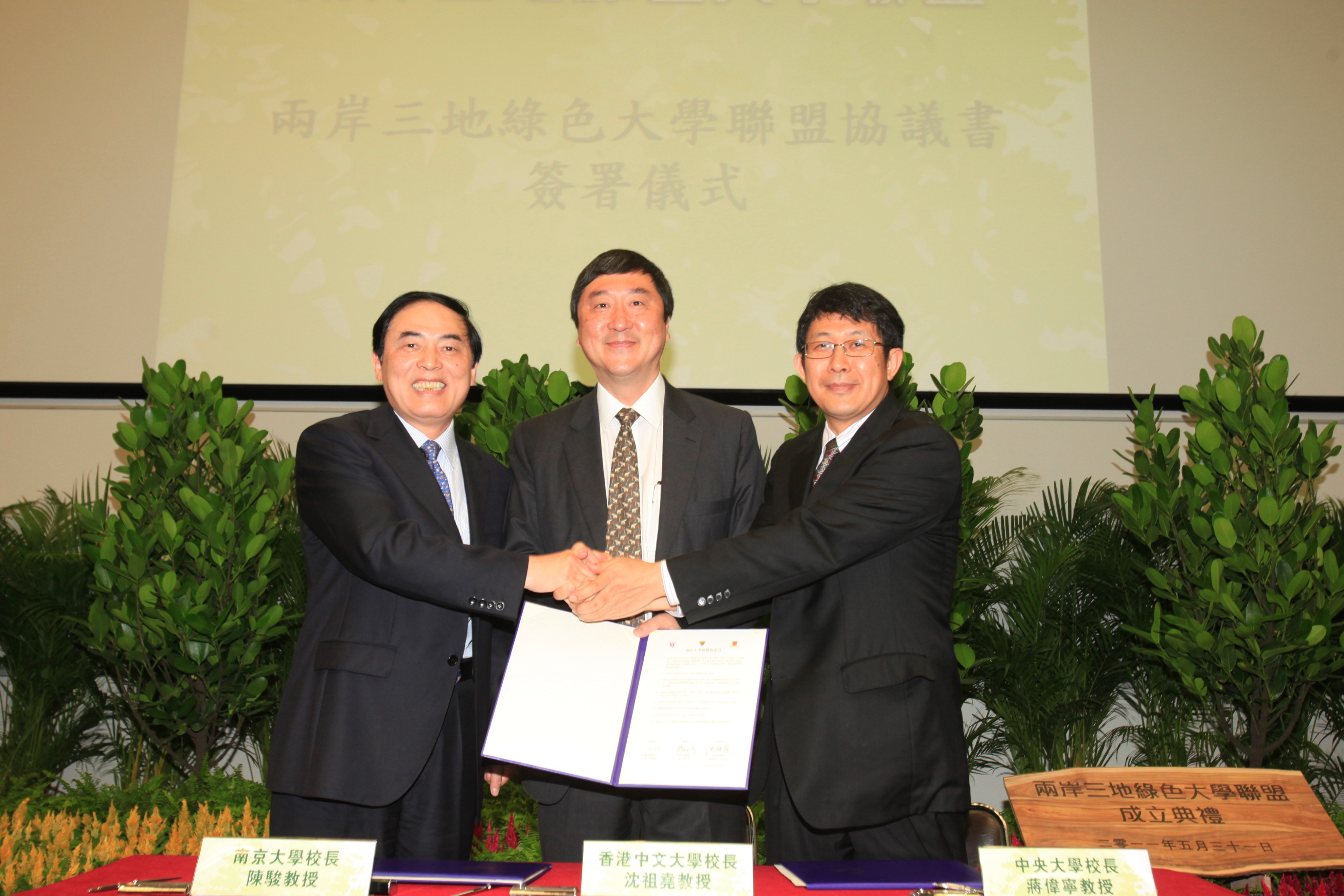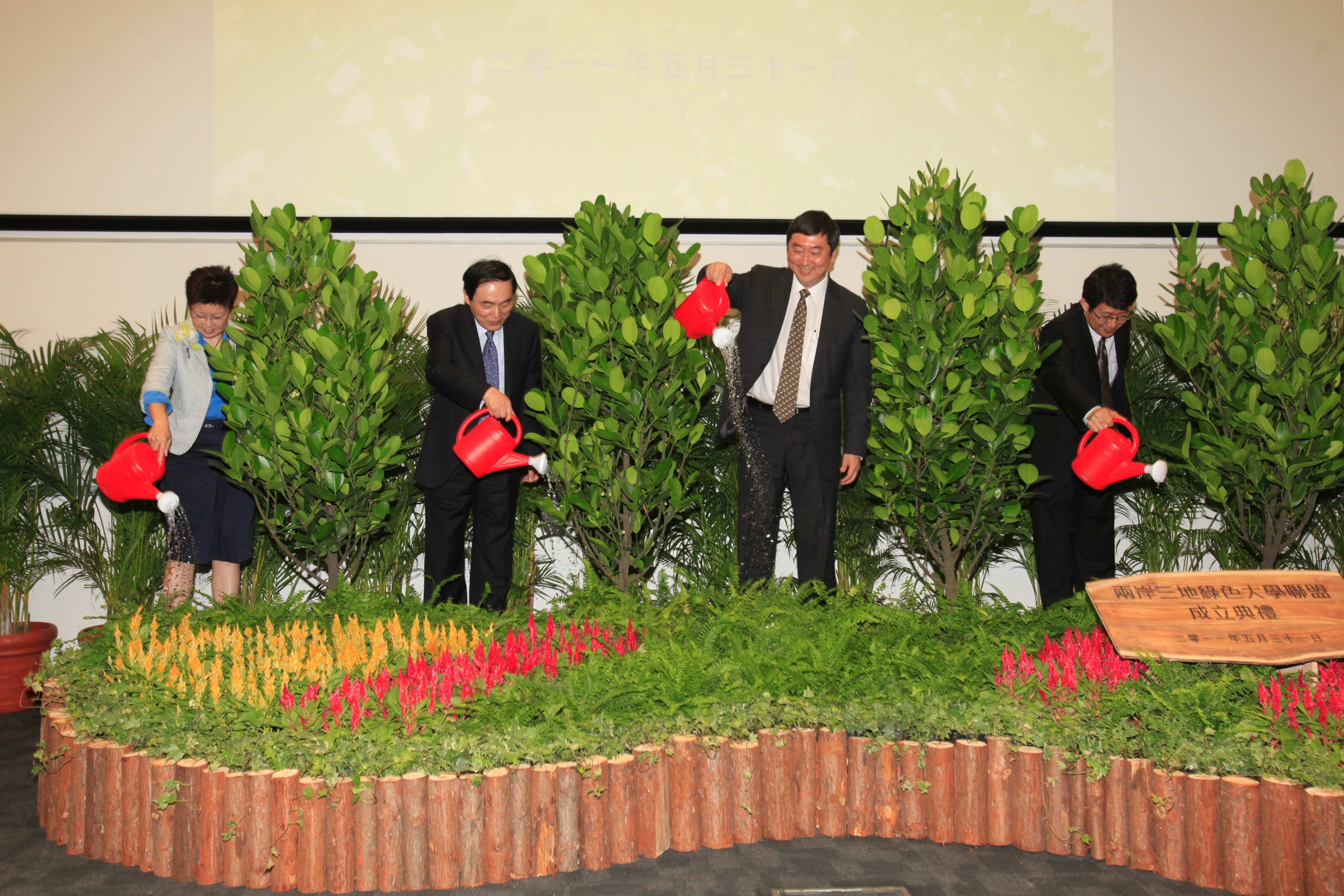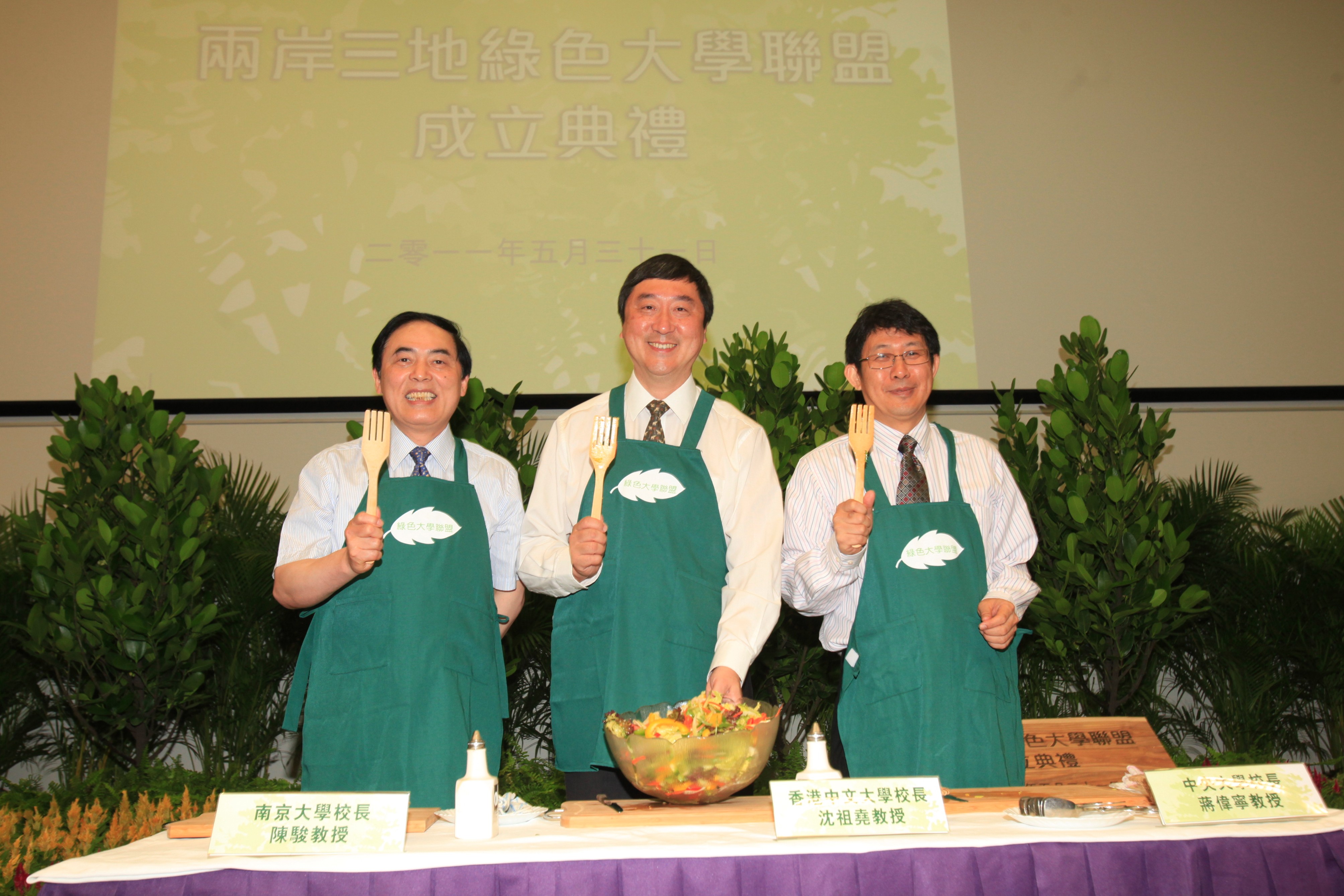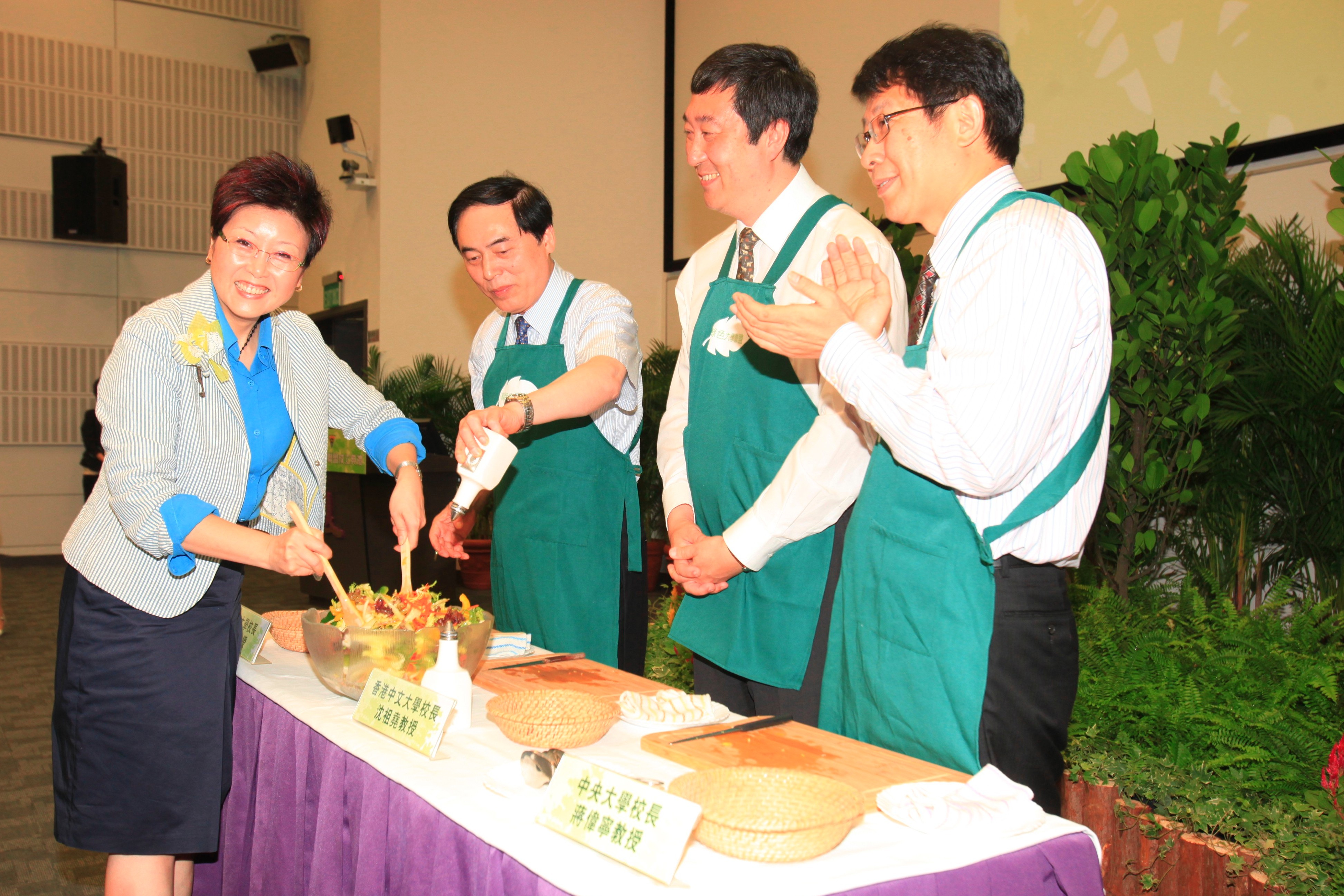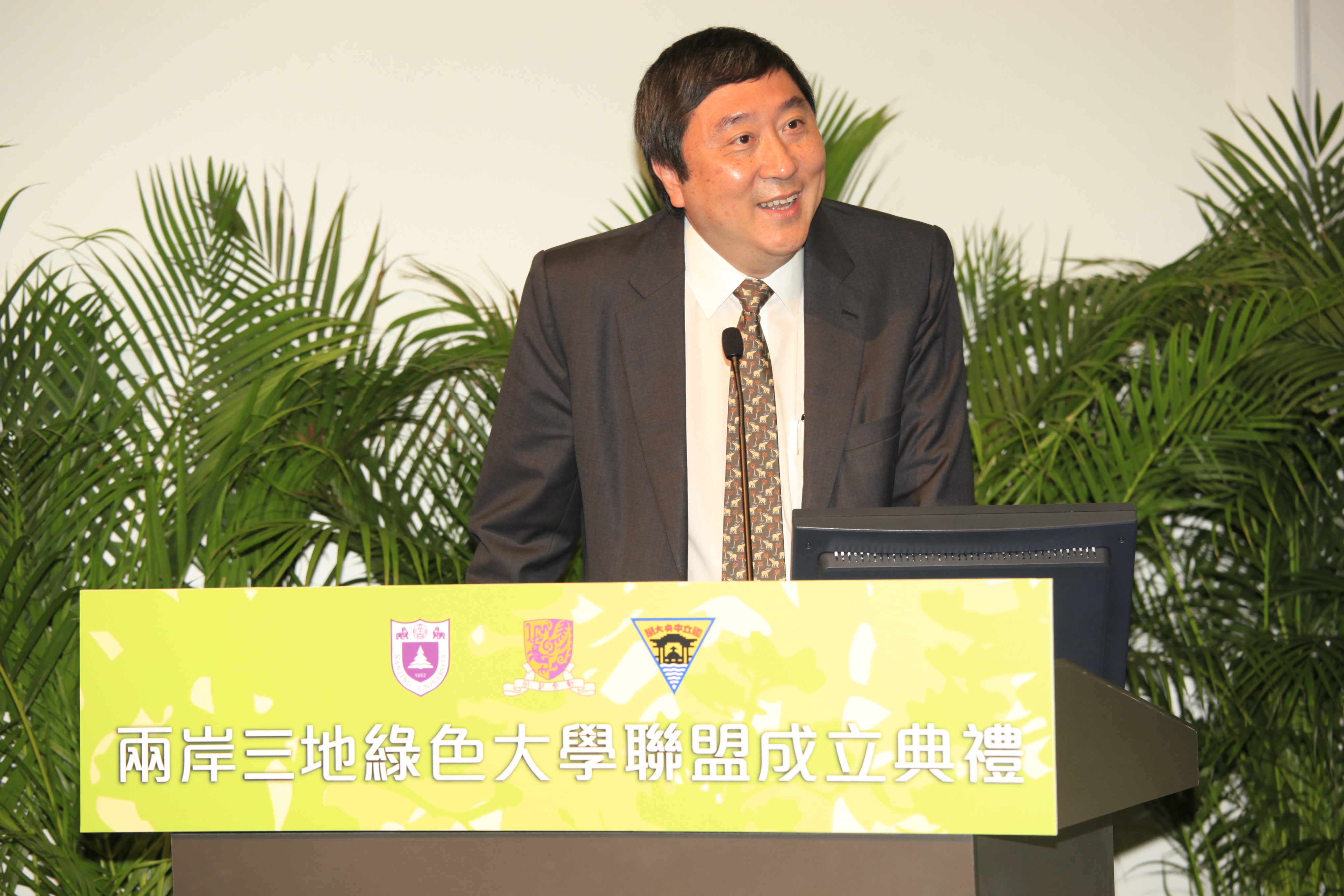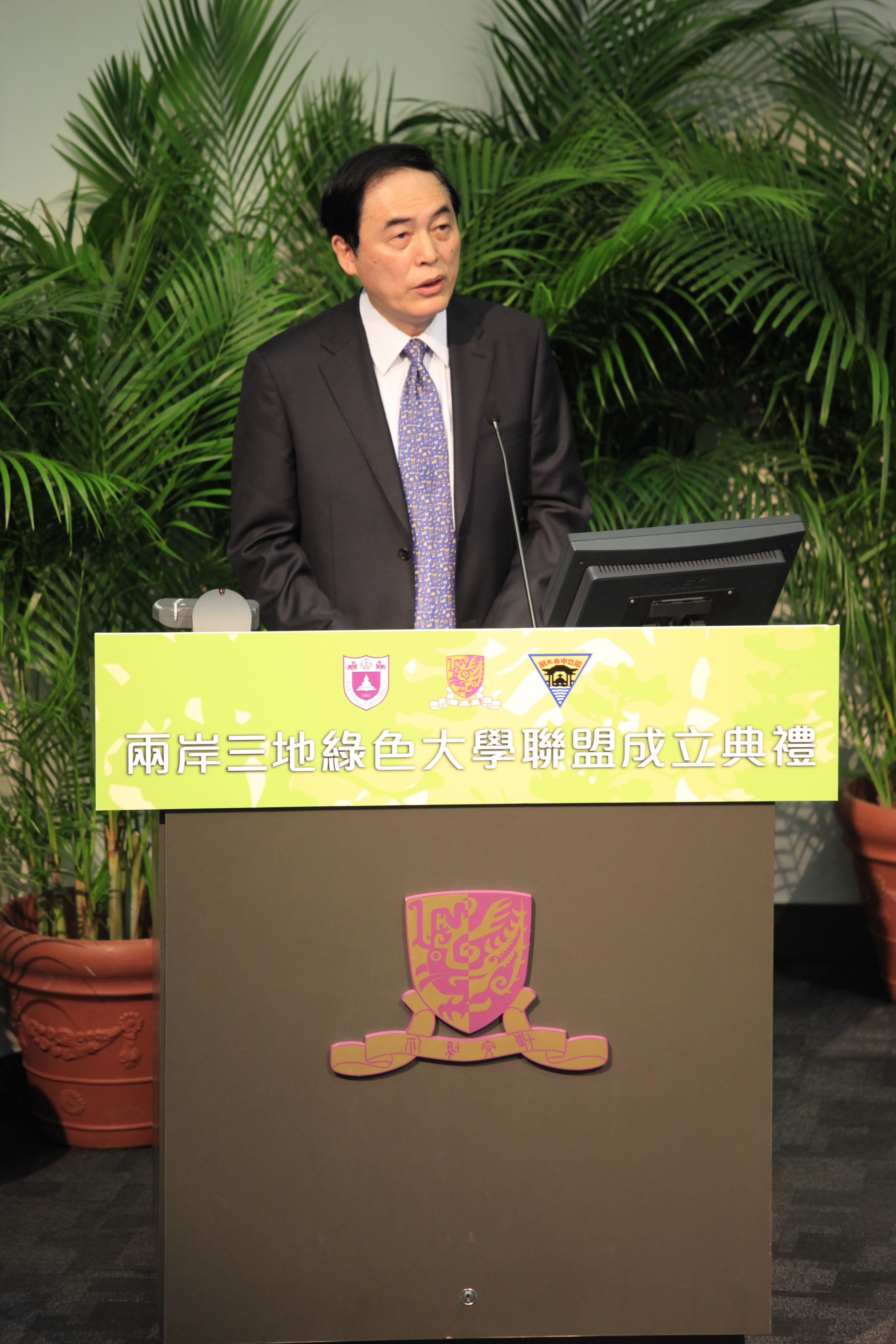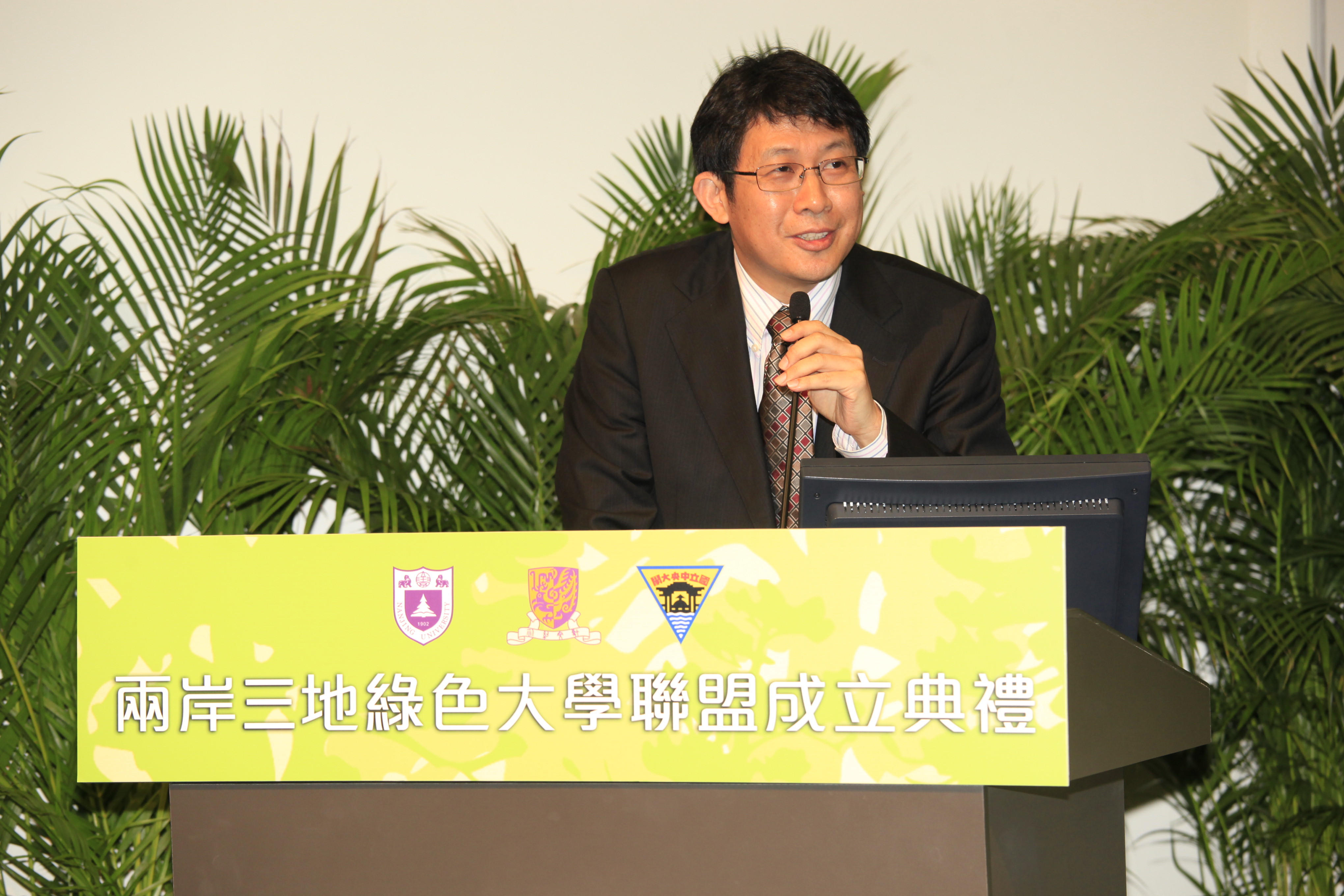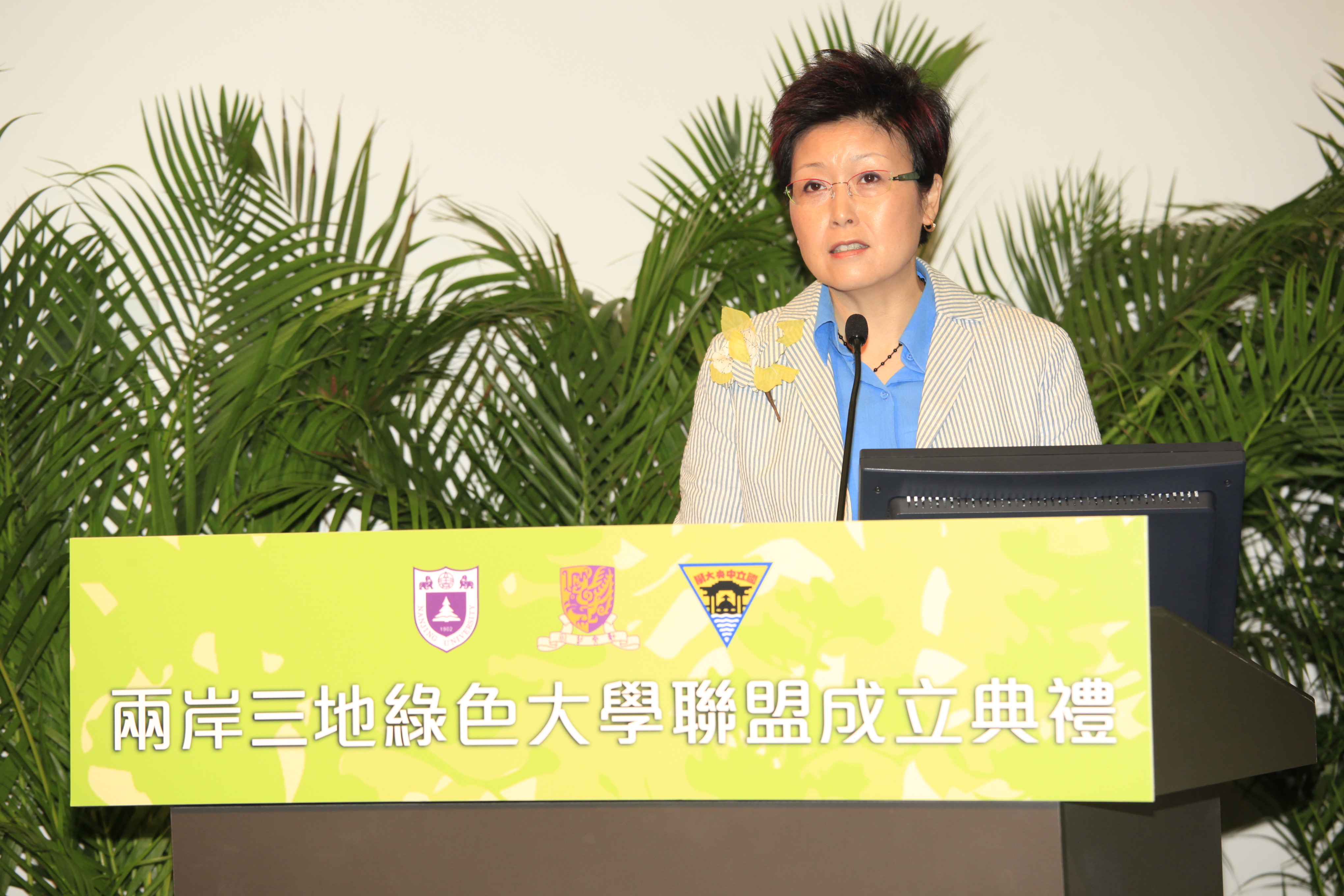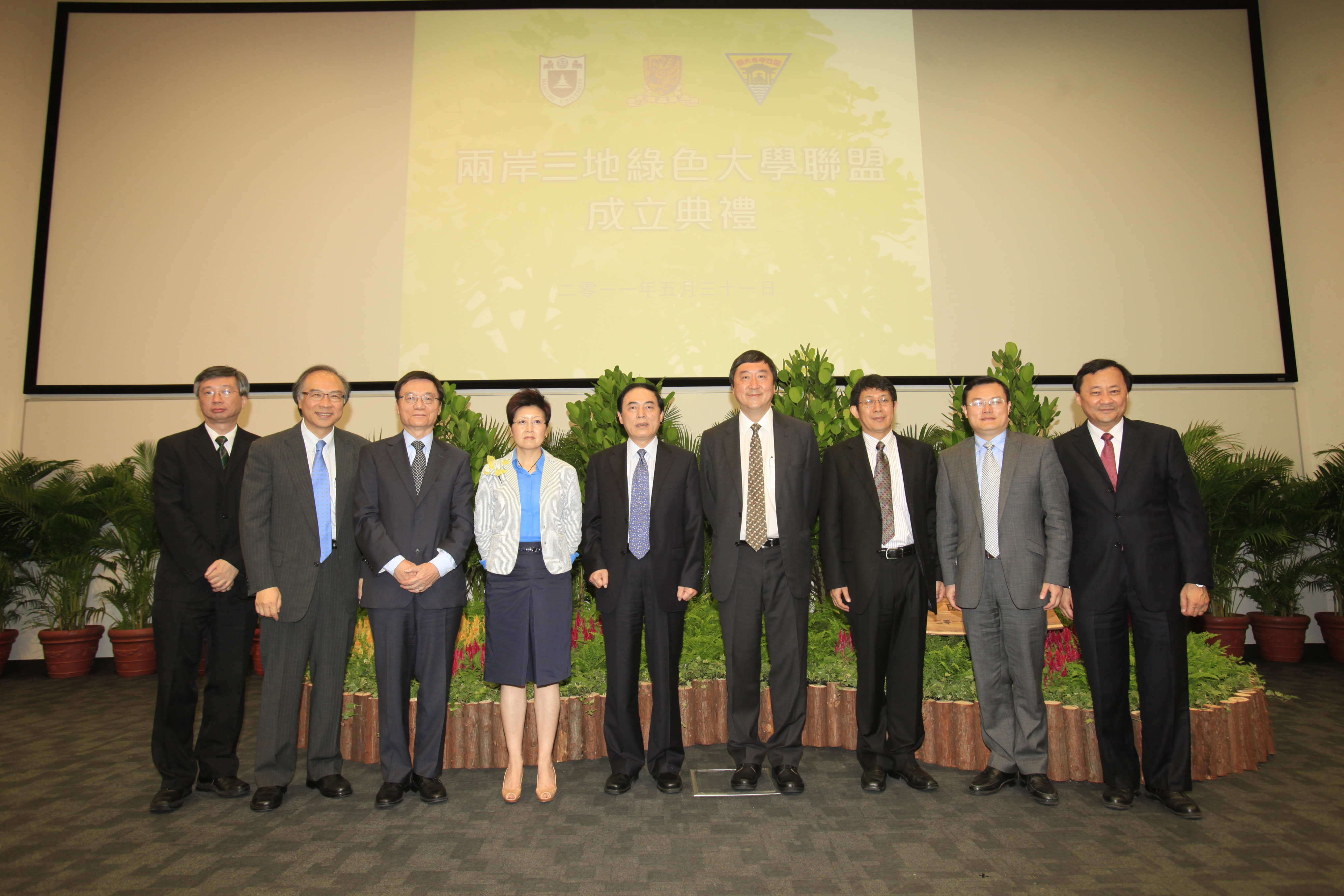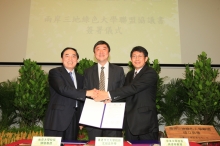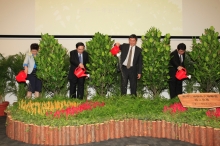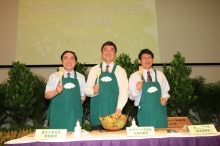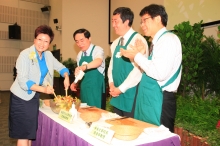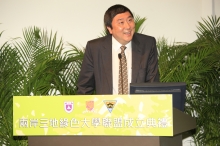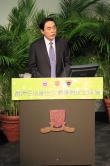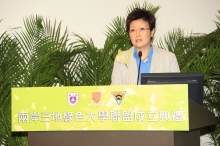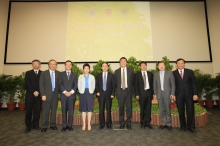CUHK
News Centre
CUHK Celebrates Launch of Cross-strait Green University Consortium to Promote Sustainable Development in Community
The Chinese University of Hong Kong (CUHK) held today (31 May) the establishment ceremony of the Cross-strait Green University Consortium, officiated by Prof. Chen Jun, President of Nanjing University; Prof. Chiang Wei-ling, President of Central University; Dr. Poon Kit, Kitty, Acting Secretary for the Environment, Environment Bureau, HKSAR Government; and Prof. Joseph J.Y. Sung, Vice-Chancellor of CUHK.
CUHK, Nanjing University and Central University have long been close collaborators on academic exchange and scientific research. The Cross-strait Green University Consortium, consolidating resources from the three institutions, serves as a platform for driving initiatives that incorporate green concepts into research and education. Presidents of the three universities signed the agreement of the Green University Consortium and Prof. Joseph J.Y. Sung made the declaration. The officiating guests also hosted a tree planting ceremony and prepared a low-carbon dish using healthy ingredients to signify their commitment to environmental protection.
Professor Sung said, ‘Every individual or organization should be responsible for their actions and the future of the world. Tertiary institutions are dedicated to advancing green science research, green education and social services, as well as promoting green culture. CUHK strives to promote environmental education and the concept of sustainability by continuously developing innovative green projects. As one of the most admired green campuses, we aspire to extend our experience to the community and promote sustainable development.’
Over a hundred guests from Hong Kong, mainland China and Taiwan witnessed the historical moment of the establishment of the Green University Consortium. It symbolizes the collaboration among institutions in pursuing excellence, educating the young, and rendering community services to realize and promulgate sustainable development.
According to the Green University Consortium Agreement, the three member institutions will host regular seminars, co-organize research teams, develop cross-institution green programmes, share teaching resources and exchange learning experience to boost academic standards and innovation. They will also get students involved in building a green campus, in community services and in field trips.
Since its establishment in the 1960s, CUHK has spared no effort in protecting the natural environment of the campus. Being the first local university to conduct an environmental audit, the University has an effective environmental management framework, defining clear goals and guidelines for waste reduction, energy and ecology conservation. A number of task forces and committees are in place to improve the environmental management systems. For two years in a row, the University has been recognized by the Hong Kong Awards for Environmental Excellence. Further to the silver award won in 2009, the University reaped the gold award in 2010 under the category of Public Organizations and Utilities, out of a total of 400 plus entries, and was granted the class of excellence ‘Energywi$e’ label, setting a model of sustainability in the academic sector.
As stated in the report of the campus master plan released in April in 2009, the University pledges to reduce carbon dioxide emission and energy consumption, with a 20% reduction in greenhouse gas emission and in energy use per capita by 2025, striving to be a low carbon campus. Back in 2004, the University was the first among tertiary institutions to use solar panels to generate hot water, and later extended its usage to other aspects such as lighting. With solar energy widely being used on campus, it is now the largest user of this renewable energy in the territory. Energy efficiency is also greatly enhanced by using LED lighting and improving the cooling system. In terms of ecology preservation, the University has established policies for tree preservation and compensation. Green roofs are actively implemented and a swift preservation programme is in force to protect the largest swift colony in Hong Kong. Other green measures include minimizing the use of water and paper, waste separation, providing green education to the community, etc. (see Appendix)
For more photos, please visit:
https://www.cpr.cuhk.edu.hk/en/events_recap_detail.php?id=13&s=
From left: Prof. Chen Jun, President, Nanjing University; Prof. Joseph J.Y. Sung, Vice-Chancellor, CUHK; and Prof. Chiang Wei-ling, President, Central University sign the Green University Consortium Agreement.
Officiating guests water the trees to signify their commitment to environmental protection. From left: Dr. Poon Kit, Kitty, Acting Secretary for the Environment, Environment Bureau, HKSAR Government Prof. Chen Jun Prof. Joseph J.Y. Sung Prof. Chiang Wei-ling
Speech by Dr. Poon Kit, Kitty, Acting Secretary for the Environment, Environment Bureau, HKSAR Government.


